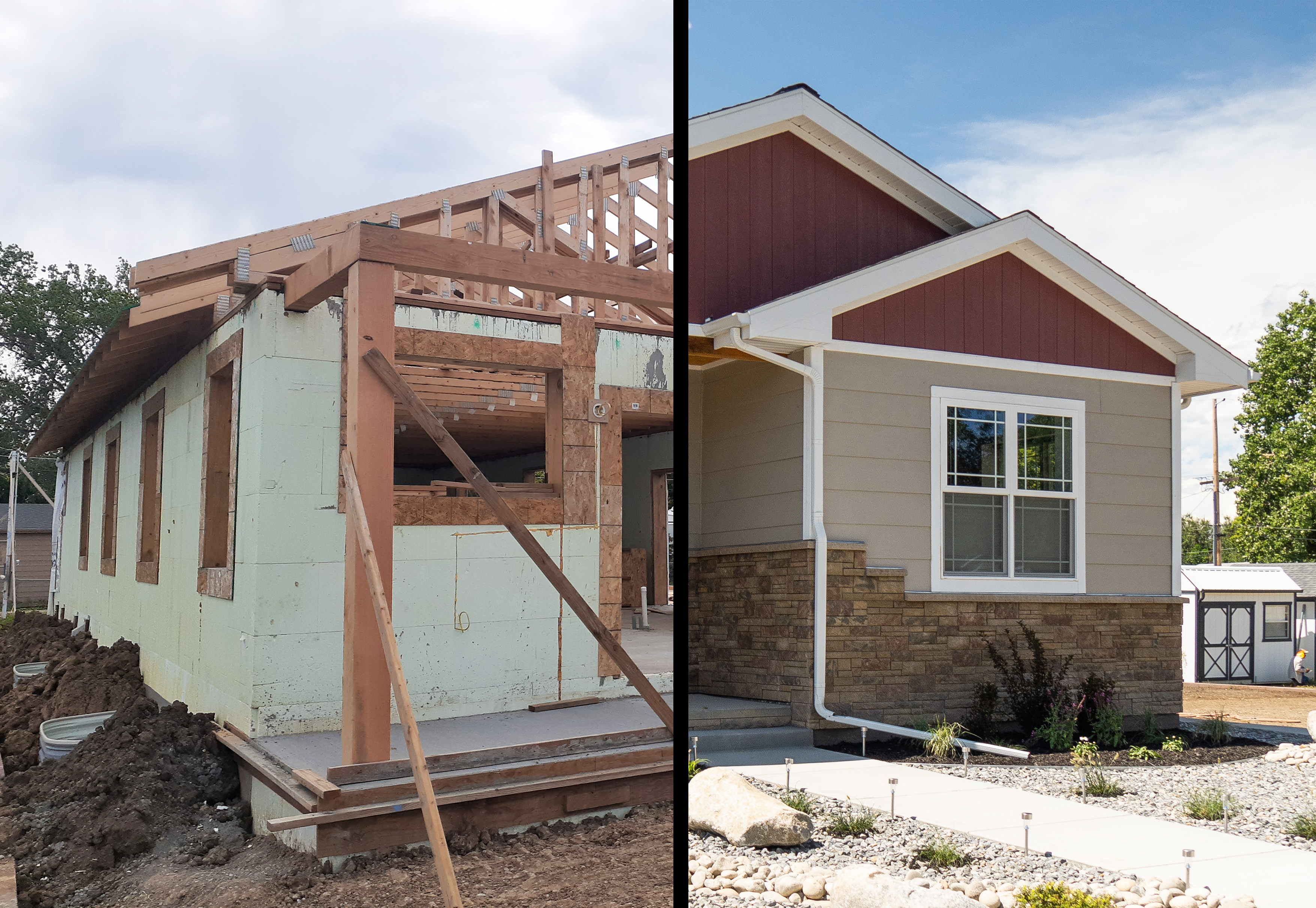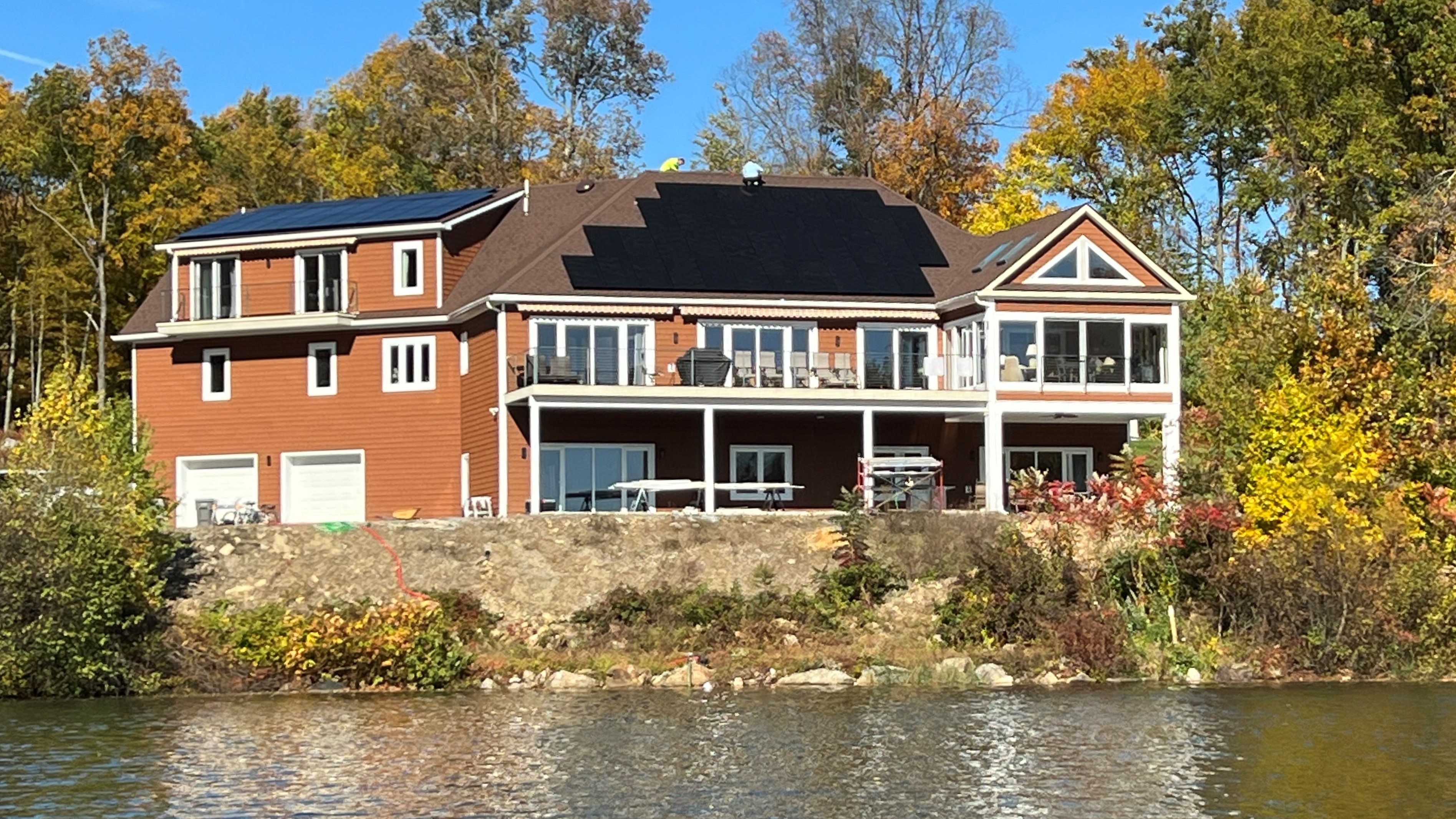
- Products
- Why Nudura
- Nudura Project Applications
- Training Academy
- Resources
- Company
If you’re planning on a building a new home, there’s a structural material you’ll want to consider: Insulated Concrete Forms, or ICFs, for short. As the name suggests, ICFs combine two layers of insulation with a solid concrete core for a durable, energy-efficient sandwich. ICF construction can be used for foundations and exterior walls up to the roofline. Here are the top five reasons you’ll want to use ICFs to build your home.

1. Energy Efficiency
ICFs start with two connect panels of expanded polystyrene (EPS) foam. These forms are then filled with concrete and reinforced with rebar. With continuous layers of insulation on the inside and out of the house, homes built with ICFs are among the most energy efficient on the market. The total rating for these walls is R-23.59, and up to R-50 can be achieved.
The overall impact is that ICF homes consume nearly 60 percent less energy for heating and cooling than wood-framed homes. ICFs are the solid foundation to start with if you’re trying to build a truly sustainable house. You can even achieve net-zero status in which your home produces at least as much energy as it consumes.
2. Disaster Resilience
Depending on where you live, your home could face a battering from tornados and hurricanes, the rattling of an earthquake, the heat of a wildfire, or all of the above. If you build your house with ICFs, you can rest easy knowing that your home will withstand some of the worst conditions Mother Nature can throw at it.
Nudura ICFs have a 4-hour fire-resistance rating, compared to 1 hour or less for a wood-framed home. That extra time could literally be the difference between life and death if a wildfire or house fire at a neighboring property occurs in your area.
ICFs can endure windspeeds up to 250 miles per hour (400 kilometers per hour), equivalent to an F4 tornado, and they are able to stand up to flying debris. There are many examples of ICF homes still standing unscathed after an earthquake, hurricane, tornado or wildfire, demolished neighboring buildings.
3. Interior Comfort
With two layers of insulation and a monolithic concrete wall around an ICF home’s perimeter, you will not feel any drafts inside. The ICF wall system also prevents thermal bridging – a process where heated or cold air permeate the building materials from the outside indoors and vice versa. As a result, by minimizing these thermal gaps, you won’t feel any hot or cold spots and can enjoy consistent interior temperatures.
The solid mass of ICF walls also acts as soundproofing, making the inside of your home quieter and free.
4. Faster Building
Building with ICFs is actually faster and less-labor intensive than convention wood framing methods. That’s important today as most contractors are struggling with labor shortages. The lightweight ICF blocks and snap-into-place technology simplifies the process of assembling structural walls.
For other trades, it’s also easy to route wiring and plumbing, and various exterior finishes from stucco to stone veneer, can be applied directly to the material.
ICF construction can be completed 25 to 50 percent faster than wood framing.
5. Better ROI
Homeowners will find that ICFs are a worthwhile investment for their house. Beyond the energy savings they will experience as long as they live in the home, the durability of a insulated concrete form structure translates to less maintenance and fewer repairs over their lifetime.
The energy-efficiency also means you can install lower-capacity HVAC systems while maintaining indoor comfort year-round. You may even be eligible for up to 25 percent savings on your insurance costs.
And, if the time does come to sell your ICF home, buyers will be attracted to its longevity, disaster resilience, lower energy bills, indoor comfort and minimal maintenance costs.
CONTACT US
We’re committed to supporting homeowners and design professionals who are interested in or use our products. We’re always happy to help and provide more information.




